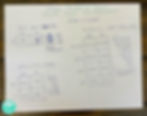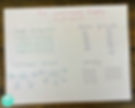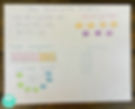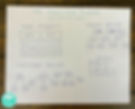
Teaching Multiplication the Easy Way
1
32
0
Multiplication was one of my favorite things about teaching third grade. I think it stems from the fact that I did not learn the multiplication facts in third grade despite spending the whole year on it. I think I picked them up through sheer repetition in about sixth grade. You see, I was not a strong math student. I was a reader and a writer. I did not have room in my life to practice multiplication facts or any other math skills. It wasn’t until high school that I realized I was actually pretty good at math when I put in the effort. As with everything, effort was key.
I always find that I am better at teaching things that I struggled with in school. I understand the frustration students feel. As a result, I can share the different ways I have thought about finding multiple entry points for struggling students. This blog post is my five best tips for teaching multiplication strategies. It includes everything from learning the dreaded multiplication facts to multiplying multi-digit numbers. This blog post is so full of multiplication strategies goodness that you are going to smile in anticipation of your next multiplication assignment just thinking about it! Plus, I have many free multiplication worksheets in my store that I will link here so that you can give your students (or your child) practice using these strategies for multiplication.
How We Memorize
I am not a fan of the memorization of random information. It is tough for the brain to remember isolated bits. When we give context to what we are trying to memorize, our brains are really good at storing it. To help our students learn multiplication math facts, we need to connect it to what they already know: adding and counting. That’s why I love using math models to teach multiplication facts. All of your students can count, and most of them are pretty good at adding one-digit numbers. Let’s use those existing math skills to build the new skill of memorizing multiplication math facts.
Using Math Models to Teach Multiplication the Easy Way
There are four math models I like to teach multiplication math facts: tape diagrams, arrays, number bonds, and equal groups. I like to start with equal groups. It is easy to use dots in equal groups to let students count to answer the multiplication problem. If they try to solve 4 x 3, they can draw four big circles and put three dots in each circle. After counting the dots, they will see that the answer is 12. Once they are comfortable counting, they can replace the dots with numbers and skip-count or add to find the right answer. Now that they understand how to multiply, it will be easier for them to memorize the math fact 4 x 3 = 12.
Next, I like to introduce tape diagrams because they are so similar to equal groups. Again, students can use either dots or numbers to find the answer to the multiplication problem. I include number bonds in my list because many teachers use number bonds when teaching students how to add. They are a familiar math model for third-grade students.
Finally, arrays are a helpful model because, again, students can find the answers to the multiplication problem by counting. Still, they are also helpful because they introduce students to the relationship between multiplication and area.
Using Multiplication to Save Time
The drawback to using dots to count within math models is that it takes a lot of time to draw and count dots. You shouldn’t have to tell students when it is time to move on from counting. They will want to! Even drawing the math models takes time. Most students will be motivated to learn the math facts and move on to the next challenge.
Giving students multiple math models to use when multiplying also allows them to practice their math facts. Choice is crucial in motivation, and students need motivation to tackle the multiplication math facts.
Why We Need to Practice Multiplication the Easy Way in the Classroom
There is so much content to cover in upper elementary classes! Something as simple as multiplication fact practice seems like a good thing for students to practice at home. Some students will practice at home, but others, like third-grade me, won’t. You can help all of your students immensely by making sure they have automaticity with the multiplication math facts. When students are automatic with math facts, they can focus their working memories on solving more complex problems. One reason students struggle with algebra is that their working memories are trying to solve basic math facts. Between that and the stress they feel about not being “good” at math, they just don’t have room to focus on the problem.
Giving your students five minutes a day to practice math facts in the classroom will help all of your students improve their math skills. It is a great warm-up activity, and you can do it in many different ways. You can use computerized practice, worksheets, games, and good old flashcards!
Math Models Mean We Can Teach Multiplication the Easy Way
Can you tell I love math models? I use them for everything because they allow students to see a math problem as a picture. Of course, we need different math models for teaching multi-digit multiplication. The multiplication math fact math models (that was a mouthful!) would be too confusing for multi-digit multiplication.
My favorite math model for teaching multi-digit multiplication is the area model. I love that it expands as students add digits to their factors, but the process stays the same. The drawback to using area models to solve multiplication problems is that it takes time. Students have to solve all of the multiplication equation parts and then add the products together to find the final answer. Your students will be motivated to multiply faster. This gives you the perfect opportunity to save the day and introduce the standard algorithm!

The Place Value Chart and Multiplication
Another model I love is the place value chart. Place value is a powerful concept that isn’t taught explicitly in most schools. As a student and a teacher, I did not fully understand the power of the place value chart. It wasn’t until I left the classroom and did a deep dive into math that I realized how much information we can show on the place value chart.
Each move to the left on the place value chart represents multiplying by ten. Moving three spaces to the left represents multiplying by 10 x 10 x 10 or 1,000. Moving to the right on the place value chart represents dividing by ten (or multiplying by 1/10). We can use the place value chart to take our students from multiplying a whole number by a ten in third grade to multiplying and dividing by powers of ten, including decimals, in fifth grade. Everything builds on itself. Each step along this continuum will be easier for our students if they use the same model and the same basic concept to learn the new skills.
Using the Place Value Chart to Multiply by Powers of Ten
We can show students how moving across place value chart is related to moving the decimal point or adding zeroes. For example, 34 x 10 = 340. We can solve this problem by adding 34 ten times, but that would take forever and most likely lead to adding mistakes. Or, we can show 34 on the place value chart. Then, we draw arrows to move each number to the next highest place value because moving one space to the left is equal to multiplying by ten. Or, we can know that moving one space to the left on the place value chart is the same as adding a zero to the end of a number.
This is the fastest way to multiply by powers of ten, but students have to understand why it works to use it correctly. Knowing the zeroes rule will help students quickly see that 37 x 10,000 = 370,000 because both the factors and the product have four zeroes.
The Zeroes Rule

The only time the zeroes rule can get a little confusing is when the factors make a ten when they are multiplied. For example, 4 x 5 = 20, so 4 x 50 = 200, not 20. If you have students who like using the zeroes rule to multiply, you will want to make sure they know this exception.
Adding zeroes and moving the decimal point are basically the same ideas. When your fifth-grade students have to multiply decimals by powers of ten, they can do it on a place value chart or use the lessons from the place value chart to move the decimal. If you multiply by a power of ten, you move the decimal to the right to make the number bigger. If you are dividing by a power of ten, move the decimal to the left to make the number smaller. For example, 68.45 x 100 = 6,845. I move the decimal point two places to the right to represent multiplying by two tens. On the other hand, 68.45/100 = 0.6845 because I move the decimal point two places to the left to represent dividing by two tens.
With a strong foundation from the place value chart, our students can get incredibly flexible with numbers, and they will be prepared to use really big and really small numbers later in their science classes.
Math Models and the Properties of Multiplication
Of course, I had to make my final tip about using math models! Math models help us see math problems as a picture. This is especially helpful when teaching the properties of multiplication.
The Commutative Property of Multiplication

Commutative Property of Multiplication: You can use any math model to teach the commutative property of multiplication. Draw two tape diagrams with different numbers of boxes to show that 3 x 6 = 6 x 3. Number bonds and equal groups work the same way. Still, my favorite math model for teaching the commutative property of multiplication is the array. Students simply rotate the array 90 degrees to see that the array is modeling both multiplication equations.
Do you want resources to help your students practice using the commutative property of multiplication? Click here!
The Distributive Property of Multiplication

Distributive Property of Multiplication: Again, you can use any of the math models to show the distributive property of multiplication. You can use colored pencils to separate tape diagrams, number bonds, and equal groups to show two parts of the multiplication equation. Still, my favorite model for teaching the distributive property of multiplication is the array because students are already used to thinking about arrays as rows. You can show how you can add rows to add two smaller multiplication problems together. You can also take away rows to make a larger multiplication problem smaller. Plus, to use the distributive property, at least one of the factors in both multiplication problems has to be the same. Using arrays, it is easy to see if the factors are different and can’t be combined using the distributive property of multiplication.
Do you want resources to help your students practice using the distributive property of multiplication? Click here.
The Associative Property of Multiplication

Associative Property of Multiplication: I suggest introducing the associative property of multiplication using arrays. It is possible to show it using the other models, and there is a benefit for helping your students develop flexibility with both models and the associative property of multiplication.
Do you want resources to help your students practice using the associative property of multiplication? Click here!
Still, the array is the easiest way to see what the property is doing. Students create an array to show one of the multiplication problems with the three multiplication problems. Then, they make multiple copies of that array to show the entire problem. For example, to model 2 x 3 x 4 = 24, students would draw two arrays that showed 3 x 4. Counting all of the dots in both arrays, they will find that the answer to the problem is 24. Similarly, students could draw four arrays showing 2 x 3 and get the same answer. Finally, to really bring home the point of the associative property of multiplication, students could draw three arrays of 2 x 4 to get the answer of 24 as well.
Whew! That was a lot of information about multiplication strategies to use in your upper elementary classroom! I hope that they were helpful to you! I also hope the worksheets I linked make your planning easier and help your students learn everything you teach about multiplication!
Feeling overwhelmed? I got your back. Click here to check out all of my multiplication resources!
#associativeproperty #distributiveproperty #elementarymath #placevaluechart



